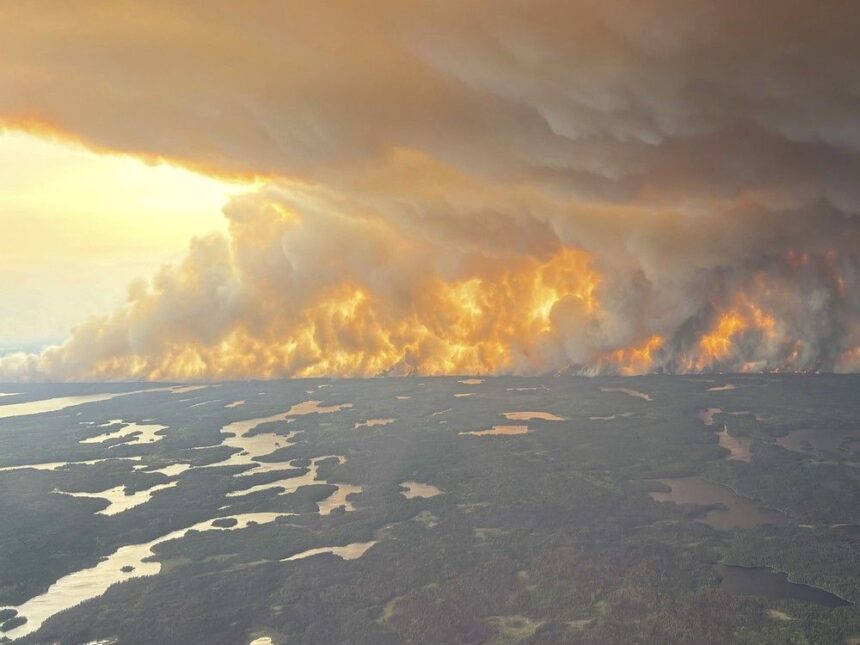The tenuous battle against a raging wildfire on the outskirts of Flin Flon reached a critical juncture Wednesday, as provincial officials announced the blaze has been temporarily contained but warned that shifting winds could rapidly reverse hard-won progress. The fire, which has been threatening the northern Manitoba mining community since Monday, remains approximately two kilometers from city limits, keeping thousands of residents on edge.
“We’ve managed to establish containment lines, but this situation remains extremely volatile,” said Don Hallett, Manitoba’s Assistant Deputy Minister for Emergency Management. “A wind shift in the wrong direction could push flames directly toward residential areas with very little warning.”
The wildfire began encroaching on Flin Flon earlier this week, prompting officials to issue an evacuation alert for the community of about 5,000 residents. According to the Manitoba Wildfire Service, the blaze has already consumed over 1,700 hectares of forest and underbrush, with smoke visible from communities across the Manitoba-Saskatchewan border.
Provincial resources have been deployed at unprecedented levels, with over 120 firefighters, eight water bombers, and multiple helicopter units working around the clock. The Canadian Armed Forces have also been placed on standby should evacuation operations become necessary.
“The next 48 hours will be decisive,” explained Dr. Alana Parsons, climate scientist at the University of Manitoba. “The combination of unseasonably dry conditions and predicted wind changes creates a perfect storm scenario that firefighters dread. This reflects the increasingly unpredictable wildfire patterns we’re seeing across Canada in recent years.”
Local businesses have already begun contingency planning, with many implementing emergency protocols. “We’ve moved sensitive equipment and backed up essential data,” said Raymond Olson, manager of Flin Flon’s Northern Industries. “The economic impact of even a partial evacuation would be substantial for our community, especially coming after years of pandemic-related challenges.”
The fire threat extends beyond immediate safety concerns, with air quality deteriorating throughout the region. Health officials have advised residents with respiratory conditions to remain indoors and use air purifiers if available.
Mayor Angela Thompson expressed cautious optimism while emphasizing the need for vigilance. “Our community has faced adversity before, but we need everyone ready to move quickly if conditions change. We’ve established evacuation routes and temporary shelters in neighboring communities.”
This wildfire is part of a troubling pattern across Western Canada, where fire seasons have grown longer and more intense. Provincial data indicates Manitoba has already experienced 27% more wildfires this season compared to the five-year average, with similar increases reported in Saskatchewan and Alberta.
As residents of Flin Flon prepare for what could be a difficult night ahead, the question remains: are remote northern communities receiving adequate resources to address the growing reality of climate-driven disaster threats, or will these communities continue facing increasingly dangerous summers with limited support?

























